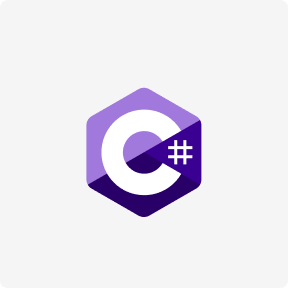Once stories are written, worked on, and completed, many teams look to capture metrics and perform analytics that can drive process improvement or used to make business cases for added investment. Here are the benefits we have found in writing requirements in a user story format. Though the benefits of writing user stories are significant, a product manager must also consider the potential disadvantages.
In no particular order — deeper and more effective collaboration, better project management, a sharper focus on details and completing tasks, and more productive and constructive prioritization in backlogging. Positioning updates from the user’s perspective helps create a robust user experience, which improves business value and the overall requirements gathering process. Due to its short and simple nature, written in plain informal language, a user story is a time-saving instrument. There are different methods product owners can use to create a user story that is both concise and informative.
User stories
Each letter stands for a separate criterion that characterizes a high-quality, insightful user story. Confirmation is the formal approval of the completed project by the customer. It is the acceptance test during which clients or their representatives check if the story was completed in accordance with the customer’s intent. Make sure it is written in a user-friendly manner without complex IT terms and lines of code.

In scrum, user stories are added to sprints and “burned down” over the duration of the sprint. Kanban teams pull user stories into their backlog and run them through their workflow. It’s this work on user stories that help scrum teams get better at estimation and sprint planning, leading to more accurate forecasting and greater agility. Thanks to stories, kanban teams learn how to manage work-in-progress (WIP) and can further refine their workflows. With all of the above advantages to the user, you may wonder what could be in it for the developer.
User story
So an epic isn’t about a specific issue but rather about an entire flow like registration, profile management, search, booking, payment, etc. As a project manager, https://www.globalcloudteam.com/ I want to track team performance weekly so that I ensure on-time delivery. In the Scrum Guide we have stakeholders mentioned but don’t really define it.
These story points are then presented to the customer and are also used to measure velocity, i.e., team productivity. If you want more information on story points and how they work, please check our dedicated post. Another way – and arguably a more efficient one – is to create and manage user stories in specialized software.
What is a user story?
High-quality user stories not only help project teams to clearly and precisely understand customer requirements but also make the project estimation and development process more efficient. User stories help your team accomplish all of this — and build better products — by forcing you to make one simple change to your approach to development planning. Epics will later be decomposed into smaller stories that fit more readily into a single iteration. Additionally, new stories can be written and added to the product backlog at any time and by anyone.
- To understand the user, the team can connect directly with them, to understand their perspective, issues faced opportunities, and other things that need addressing.
- After the requirements are clarified, the development team will design and implement the features to fulfill user’s requests.
- We’ve already explained that teams often add more details to user stories as they prioritize them in the backlog.
- Sean is a Slickplan customer support specialist, social media manager, newly minted blogger and part-time trouble-maker at Slickplan.
- Some development teams will favor an on-line version of a task board.
- Let’s dig into each of these to gain a better understanding of what makes up an effective user story.
An Agile user story is meant to be short, usually fitting on a sticky note or note card. The business should write user stories in the language of the customer so that it is clear to both the business and the development team what the customer wants and why they want it. The basics are relatively easy, yet I often hear and witness disconnects among stakeholders, product owners, developers, and testers around the quality of the requirements or whether a story is truly done.
User personas
Can be used to introduce large and complex features as well as small and simple ones. Having a DoD serves as a “gate” for the team to complete a story. Once the story has a clear statement of the WHY, WHAT, definition of user story WHO, and HOW; it is now time to confirm that you know how to call this story Done. In order to do that, you need to define a robust Acceptance Criteria, which will be the final confirmation of a User Story.
If you want to develop a story map like this one, please check Visual Paradigm’s story mapping tool. User stories should be identified together with the stakeholders, preferably through a face-to-face meeting. User story is a requirement discovery process instead of an upfront requirement analysis process. If you cannot answer that question based on steps 1 and 2, you need to go back to the start and rethink the user story. Now we have established who we are building for, it’s time to look at the functionality they expect to see and how they will interact with the product.
User story software
Now that you know what a user story looks like, you can get to work creating one. This represents the conditions that need to be satisfied to determine whether the story fulfills the intent and some other more detailed requirements. To understand the user, the team can connect directly with them, to understand their perspective, issues faced opportunities, and other things that need addressing.

These stories should be written using non-technical language to provide context to the development team. Acceptance criteria can be measured by testing and verifying if a user story meets them. This testing can be manual or automated, depending on the complexity of the criteria. These tools and techniques help ensure consistency and transparency across user stories and iterations. They also clarify requirements by adding details to user stories, thus providing engineers with better guidance through the development process.
Investing in Good Stories
Visual Paradigm Story Map supports both 3 and 4 levels of complexity for you to cope wide variety type of projects. With the who and the what all figured out, it’s time to look at why we’re building the product. But this can be problematic, as it can be applied to anyone and risks overlooking the unique needs of your target and what their pain points are. To help frame the opportunity more clearly, it’s better to get a little more specific when discussing user needs.